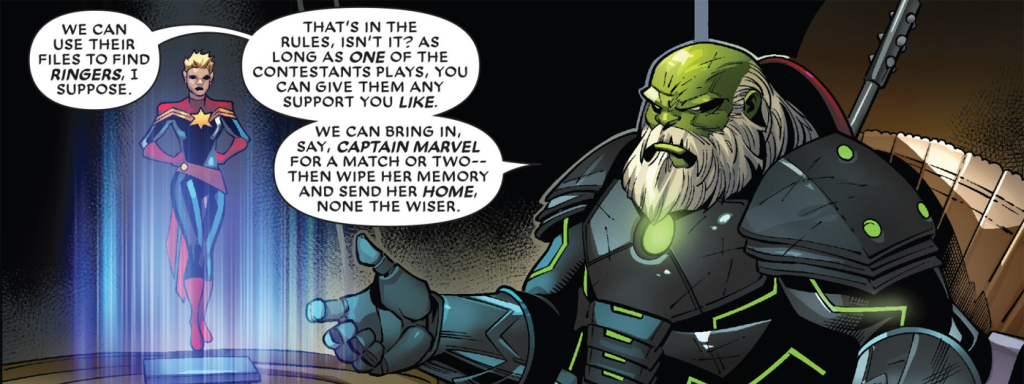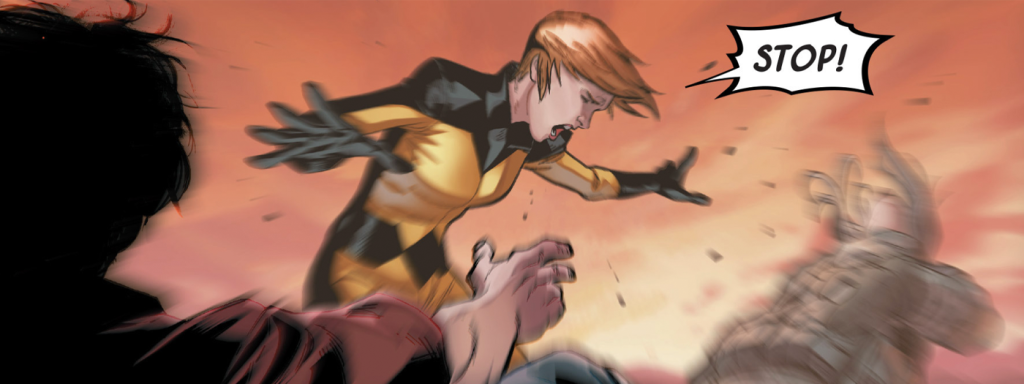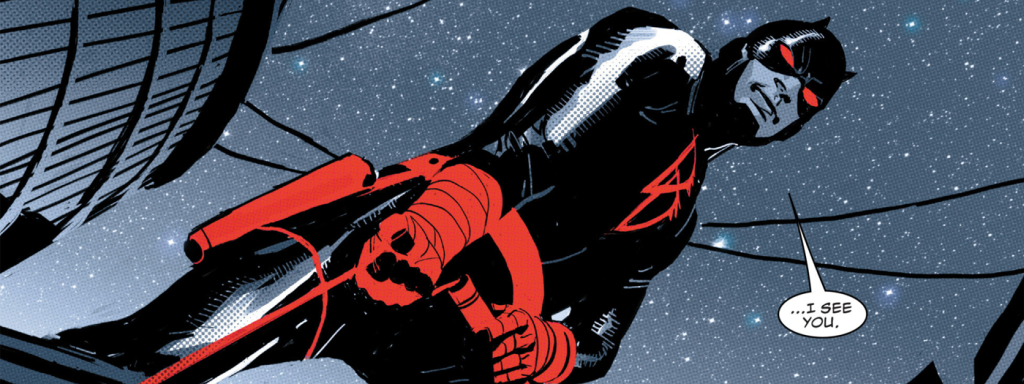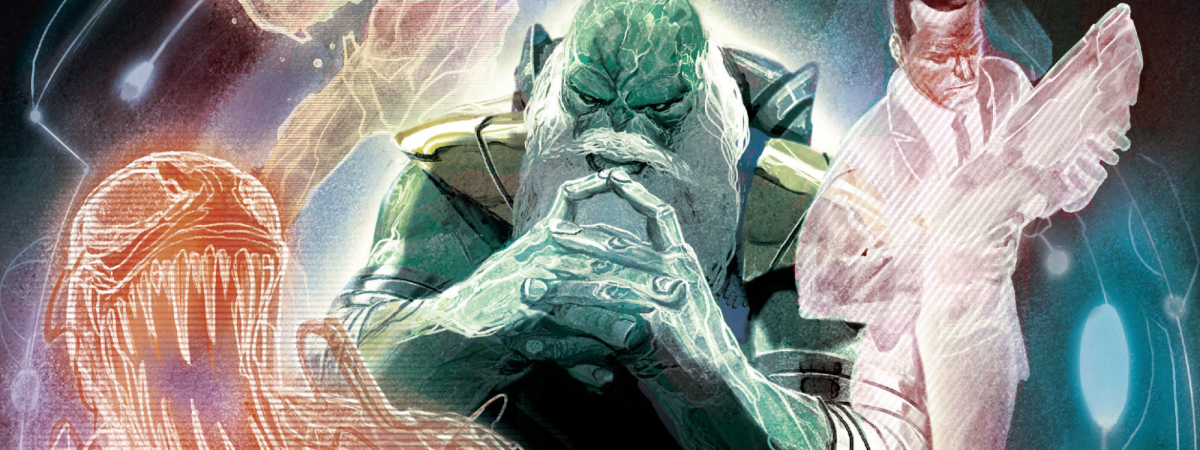The Next Big Thing is a weekly column where I go back and look at what I’ve been calling “preview anthologies”; one-shots released by superhero publishers meant to establish a new status quo and highlight new titles due for release soon. Last week, Marvel wanted us to let us know everything was “All-New” but how do you get newer than new? Well, now everything isn’t just All-New but it’s also All-Different! This week’s preview anthology is one of two which Marvel published following the conclusion of Secret Wars and while the other one — which we’ll cover next week — is more laser focused to a specific line of titles, this one is perhaps more scattershot.
I don’t have a fondness for this issue like I did for All-New Marvel Now Point One because to be honest the majority of the titles previewed here just weren’t that memorable. It might reflect more on my reading habits at the time, but most of the stuff featured in this issue is just forgettable. None of it’s bad and some of it is quite good — there’s a couple of titles in here that I’m a big big fan of — but I think Marvel had a real chance to come out swinging following Secret Wars and they kinda whiffed it a little bit.
The Maestro in “Chess Not Checkers”
(Al Ewing, Paco Medina, Juan Vlasco, David Curiel & Joe Sabino)

Just like the last issue, this issue features a framing story written by Al Ewing but instead of Loki, we’re following The Maestro and The Collector as they consider potential recruits for Contest of Champions which is probably the book that span out of Secret Wars most directly. Half-based on the original Marvel Super Hero Contest of Champions miniseries from the early-eighties and half-based on the mobile game of the same name, Contest of Champions was one of my favourite comics of this era of Marvel and a criminally underrated book that fans of Al Ewing should definitely go back and check out.
I have a bit of a soft-spot for it especially because while it wasn’t the first thing that got published, an article on Contest of Champions was the first thing I wrote for ComicsAlliance over five years ago. Ewing fans know by now just how deep his knowledge of the weirdest corners of Marvel runs, but Contest of Champions was the book where he got to unload all of that on the page. If you want to see Punisher 2099, Night Thrasher and Silver Age Sentry all in the same book, then you want to go back and read Contest of Champions.
However, I’m not sure that the framing device works as well in this issue as it did in the last one, and it feels kind of forced when Maestro and Collection are like “Hmm, I wonder what Phil Coulson is up to right now, let’s check in!” Contest of Champions itself was a brilliant and underrated gem from this era, but this particular story in this particular issue doesn’t do a great job of getting me excited to go read and read it. The big reveal of the story is that Daredevil’s mentor Stick is alive and on Maestro’s team and at least to me, that’s not the most compelling cliffhanger I’ve ever seen.
Carnage in “Night Work”
(Gerry Conway, Mike Perkins, Andy Troy & Joe Sabino)

I’ve always been sceptical of Carnage as the lead of a series, but Gerry Conway and Mike Perkins’ Carnage ongoing series did everything right to make it work, mostly because Conway just applied the formula of another series he wrote over forty years ago. It’s Tomb of Dracula but with Cletus Kasady instead of Vlad Dracul. Dracula wasn’t actually the main character of the book which bore his name, it was about the characters hunting him and the people whose paths crossed with the lord of vampires.
Bringing in John Jameson as Carnage’s own Blade was a great move, but Conway maybe went a bit too far with the Tomb of Dracula similarities as Carnage kinda goes off into weird supernatural areas, tying in The Darkhold and Cthon and making Carnage a dark prophet. The series starts off well and has an interesting hook, but it goes in some wild directions that I don’t think a Carnage series ever needs to do. It’s the sort of book that if you don’t love symbiotes, I’d say you don’t need to go back to and if you do love symbiotes, you’ve probably already read it.
Rocket Raccoon & Groot in “Trick or Treat or Shot By A Big Gun”
(Skottie Young, Filip Andrade, Jean-Franciois Beaulieu & Jeff Eckleberry)

I have to admit that I just didn’t read Skottie Young’s runs on Rocket Raccoon and Rocket Raccoon & Groot, so I can’t talk too much about the series that spins out of this story, but it’s a fun enough Halloween short. I’m not a massive fan of the Guardians on Earth though, I’m not sure it ever works outside of Chip Zdarsky and Kris Anka’s Star-Lord. This is a pretty rote alien shapeshifter hiding among humans story and there’s very little that makes me think maybe I should go back and check out what I missed.
I do really like Filip Andrade’s art here though; I think as a writer, Skottie works best with artists that have a similar sensibility to his own and Andrade does a great job of adapting to Young’s style of storytelling without ever coming close to looking like a Skottie Young clone. The alien design is a bit uninspired but for a throwaway story like this it’s not the sort of thing that you want to throw away your best designs on. Overall, this is the least compelling of the stories in this one-shot and as an advertisement for an ongoing series, it misses the mark by a pretty wide margin.
Agents of SHIELD in “The Coulson Protocols”
(Marc Guggenheim, German Peralta, Chris Sotomayor & Joe Caramagna)

This is a really weird one to me, from a behind-the-scenes perspective. Agents of SHIELD is obviously based on the ABC television show of the same name, featuring characters like Melinda May, Jemma Sims and Leo Fitz who appeared on screen before being integrated into the comics universe. By design, Agents of SHIELD is a synergistic comic; it wants viewers of the show to check out the comics and it wants readers of the comic to check out the show. However, this volume of the series — a follow-up to Mark Waid’s SHIELD series — is written by Marc Guggenheim, who at the time was the showrunner of Arrow.
I’m sure there’s no professional issues at play, but as a reader it’s kinda weird to think that the showrunner of DC’s biggest network television show was writing the comic version of Marvel’s biggest network television show. Either way, this is probably my favourite comic by Guggenheim, which clears a fairly low bar, who does a great job of exploring the weird corners of the Marvel Universe in interesting ways and German Peralta is an artist I’ve been a fan of for ages, whose work fits the superhero espionage tone of the title to a tee.
Agents of SHIELD suffers from the same problem a lot of titles from this era have; I can remember liking it, but I don’t think I could actually tell you much of what happened? I think it’s got kind of a “Tower of Babel” spin to it? Like, Phil Coulson has an archive of how to take down every superhero and some villains get their hands on it? I can’t remember exactly and I’m not going to check, because it illustrates my point about how forgettable a lot of this era was. I don’t think every comic needs to have major lasting impacts to the shape of the shared universe, but it’s the sort of series you could just pluck out of history and no-one would miss it, you know?
All-New Inhumans in “Sublimation”
(Charles Soule, Stefano Caselli, Andres Mosa & Clayton Cowles)

I feel like this era of Inhuman supremacy is going to look weirder and weirder the further out we get from it. Everyone knew that Marvel was sidelining the X-Men in favour of Inhumans because they had film and merchandise rights to one and not the other, but there was no way anyone at Marvel was ever going to admit that on the record. All-New Inhumans is essentially an X-Men comic; it’s about a team of young super powered individuals going around the world and tracking down people who have just developed their own powers before they hurt someone or someone hurts them.
There was a lot of negativity aimed at the Inhumans to the point that their titles didn’t really get a fair shake from fans at the time, but Charles Soule did a great job of building up the world and mythology of the franchise. Despite being an absolute disaster of a person, it was nice to see Crystal get a lead role away from who she’s related to or who she’s married to and the cast of young Inhumans — or NuHumans, which just sucked as a term — were interesting and had some really unique powers. I think this is going to be more and more of curiosity as time goes on; it’s still too recent to be as much of an artifact as it’s going to be, but if you missed out on this era of Marvel, it’s a good indication of what the publisher was trying to accomplish.
Daredevil in “Blindspot”
(Charles Soule, Ron Garney, Matt Milla & Joe Caramagna)

Back-to-back vignettes from Charles Soule here, but while All-New Inhumans is more of a curiosity, Daredevil represents the apex of Soule’s superhero work. I remember at the time being really hostile towards this run because it was such a stark break from the Mark Waid/Chris Samnee run that came before it, but it grew on me overtime and now I see it as a real overlooked and underappreciated part of the character’s history.
Ron Garney and Matt Milla really defined the early tone of this series, rendering it entirely in greytones except for the deepest blood red to highlight the violence and brutality of Daredevil’s new focus. Garney’s approach in Daredevil is one of the biggest creative leaps for a creator I’d always considered reliable if not exceptional; someone who could be described “a good hand” in wrestling parlance. Daredevil is, at least in its earliest issues, unmistakably Garney’s comic and it’s the sort of bold new approach to an established title that I’d love to see more.
I don’t consider this to be the worst of Marvel’s preview anthologies but it is the most forgettable. There aren’t many people fondly remembering the days of Carnage, Agents of SHIELD and All-New Inhumans; even something like Daredevil, which I think was a great run, kind of suffered from being sandwiched between Waid/Samnee and Zdarsky/Checchetto. You’re not missing anything by skipping this one-shot, unless you’re an absolute completionist for any of the titles featured therein. Let’s hope that the other post-Secret Wars preview anthology has more of a focus and more of an impact.

